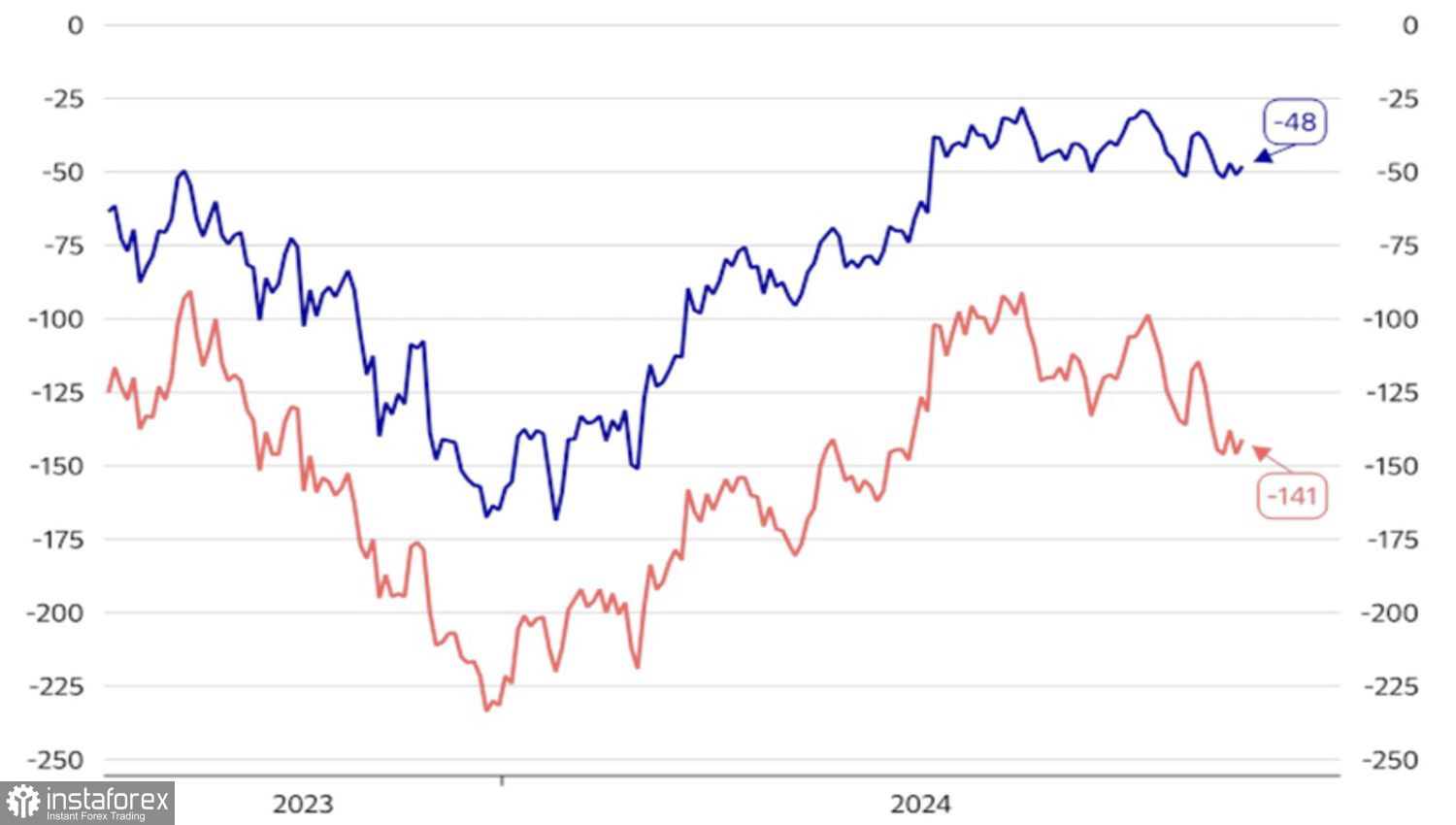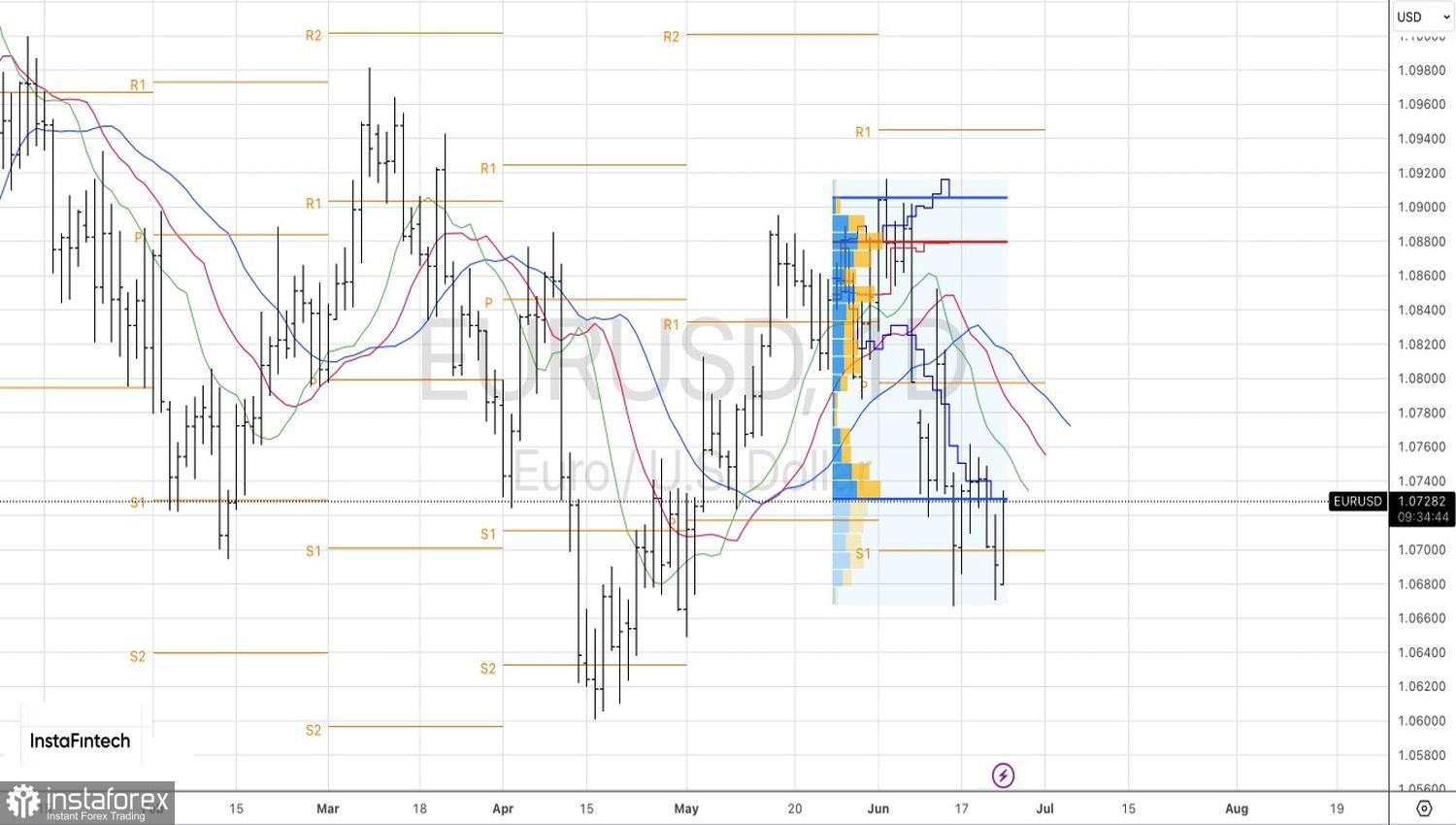There have always been upheavals. However, a distinctive feature of the current stage of the global economy's development is its transition from an overheated state to a cooler one. In reality, this is good because it was previously believed that the most aggressive monetary restriction by the Fed and other central banks worldwide in decades would freeze the economy and plunge it into recession. However, the flip side is higher rates for an extended period, which supports the "bears" in EUR/USD.
The consensus forecast from Bloomberg experts suggests that the US GDP will expand by 2.4% in 2024, consumer prices will rise by 3.1%, and unemployment will remain at 3.9%. All these are characteristics of a still strong economy rather than a cooling one. It is not surprising that investors now foresee at most two acts of monetary policy easing by the Fed this year instead of the previously expected 5-6. Expectations for the scale of monetary expansion in 2025 have also decreased to 141 basis points.
Dynamics of the expected scale of Fed monetary expansion.

In a strong economy, there cannot be weak inflation. FOMC officials are rightly cautious about its rapid movement toward the 2% target despite the significant slowdown in consumer prices in May. As expected, their path will be bumpy, and the last mile in the fight against PCE will be the most difficult. These circumstances further convince us that rates should remain high for a long time. This applies to the federal funds rate, Treasury bond yields, and mortgage rates.
Most likely, the recovery of the Treasury bond market and the associated drop in yields has gone too far. Along with artificial intelligence technologies and expectations of impressive corporate profits, it supported the S&P 500 and was supposed to sink the US dollar. It did not. Moreover, as soon as debt yields resume their growth, the USD index will gain new momentum.
Dynamics of bond yields and the US dollar

In my opinion, the upward rebound of EUR/USD at the beginning of the last week of June was due to China's offer to Germany to reduce import tariffs on its cars by 15% if the EU agrees to reduce tariffs on imports of electric vehicles from China into its market. Previously, there were rumors that Beijing would raise tariffs to 25% in retaliation for the trade war initiated by Brussels. In reality, the response was more lenient, which led to the strengthening of the euro.

However, it is not worth getting carried away with this. The prolonged holding of the federal funds rate at a plateau, parliamentary elections in France, the gradual increase in US Treasury yields, and the pullback of American stock indices will bring everything back to square one in the main currency pair.
Technically, on the daily chart, EUR/USD is attempting to break through the lower boundary of the fair value range of 1.073-1.09. Failure in this endeavor, followed by a decline in quotes below the pivot level of 1.071, will be a basis for selling.
 English
English 
 Русский
Русский Bahasa Indonesia
Bahasa Indonesia Bahasa Malay
Bahasa Malay ไทย
ไทย Español
Español Deutsch
Deutsch Български
Български Français
Français Tiếng Việt
Tiếng Việt 中文
中文 বাংলা
বাংলা हिन्दी
हिन्दी Čeština
Čeština Українська
Українська Română
Română

